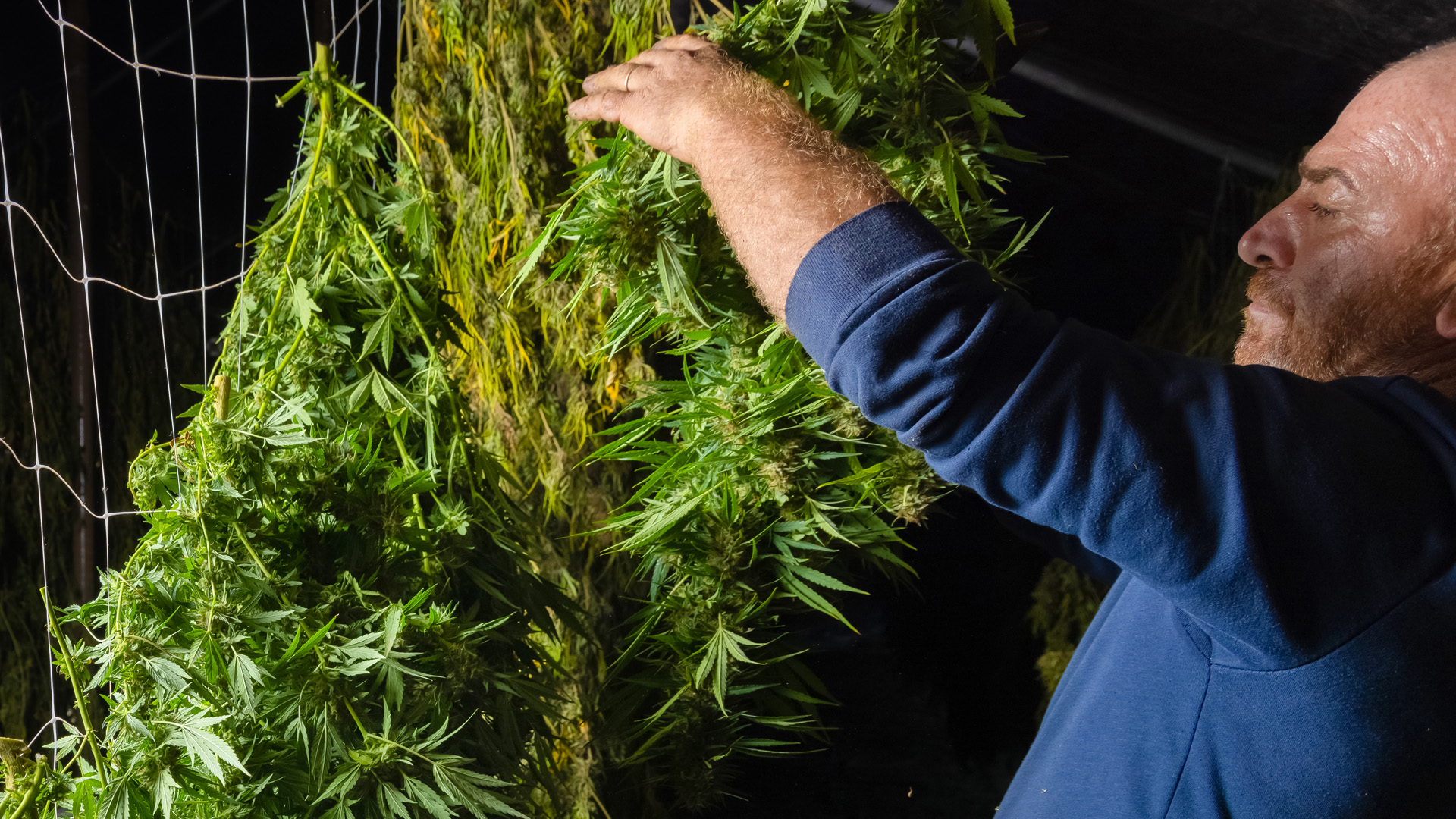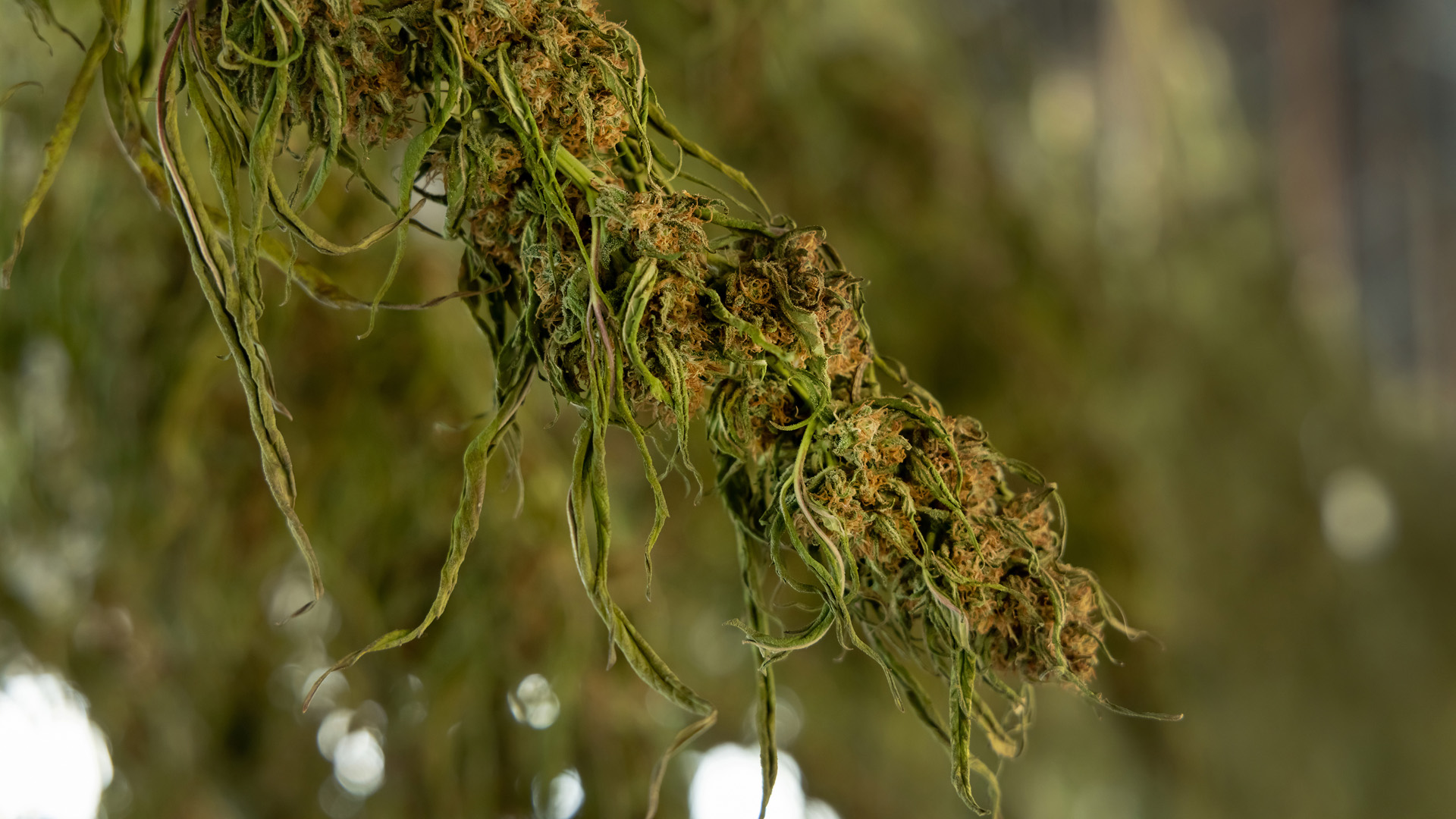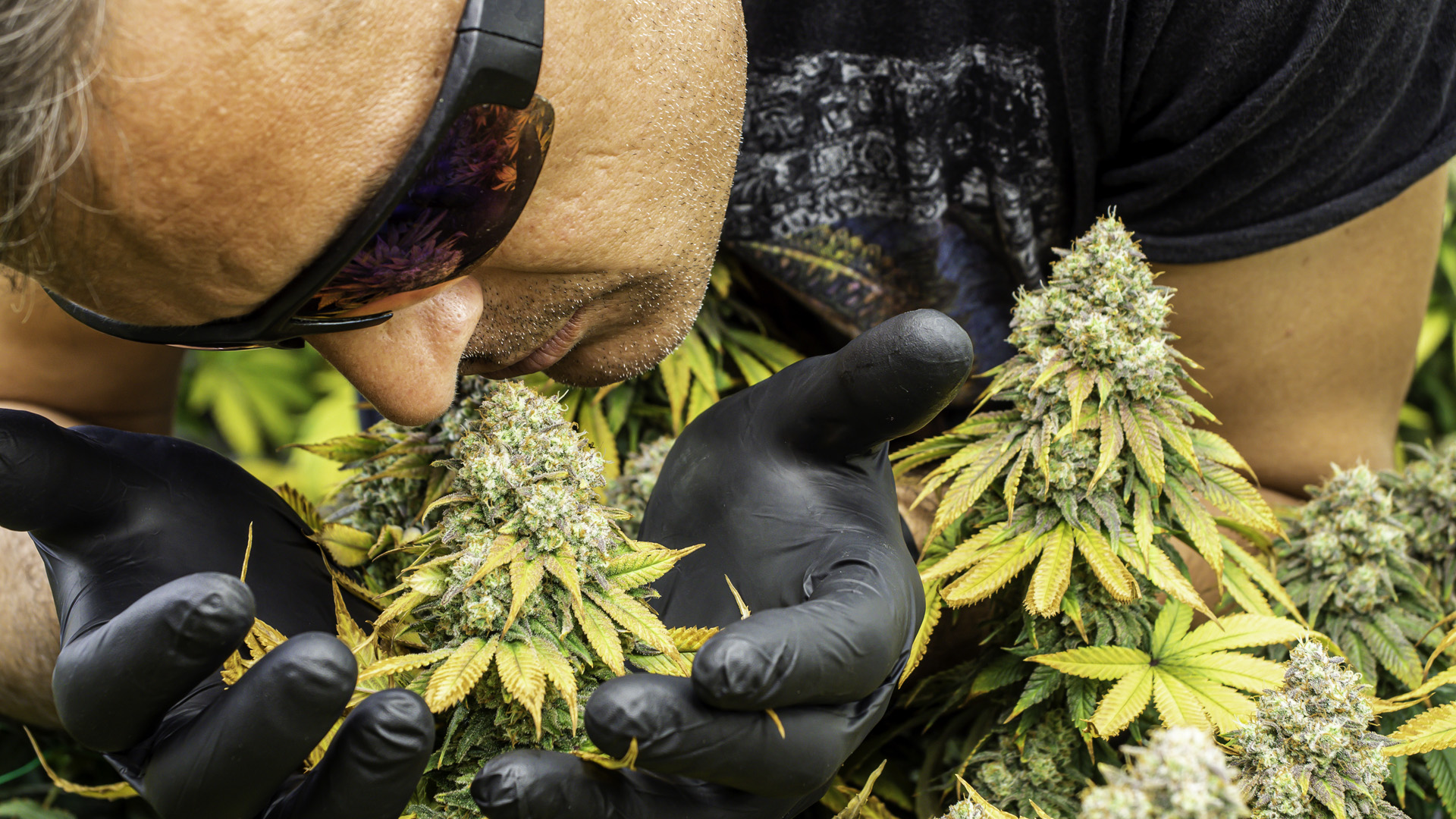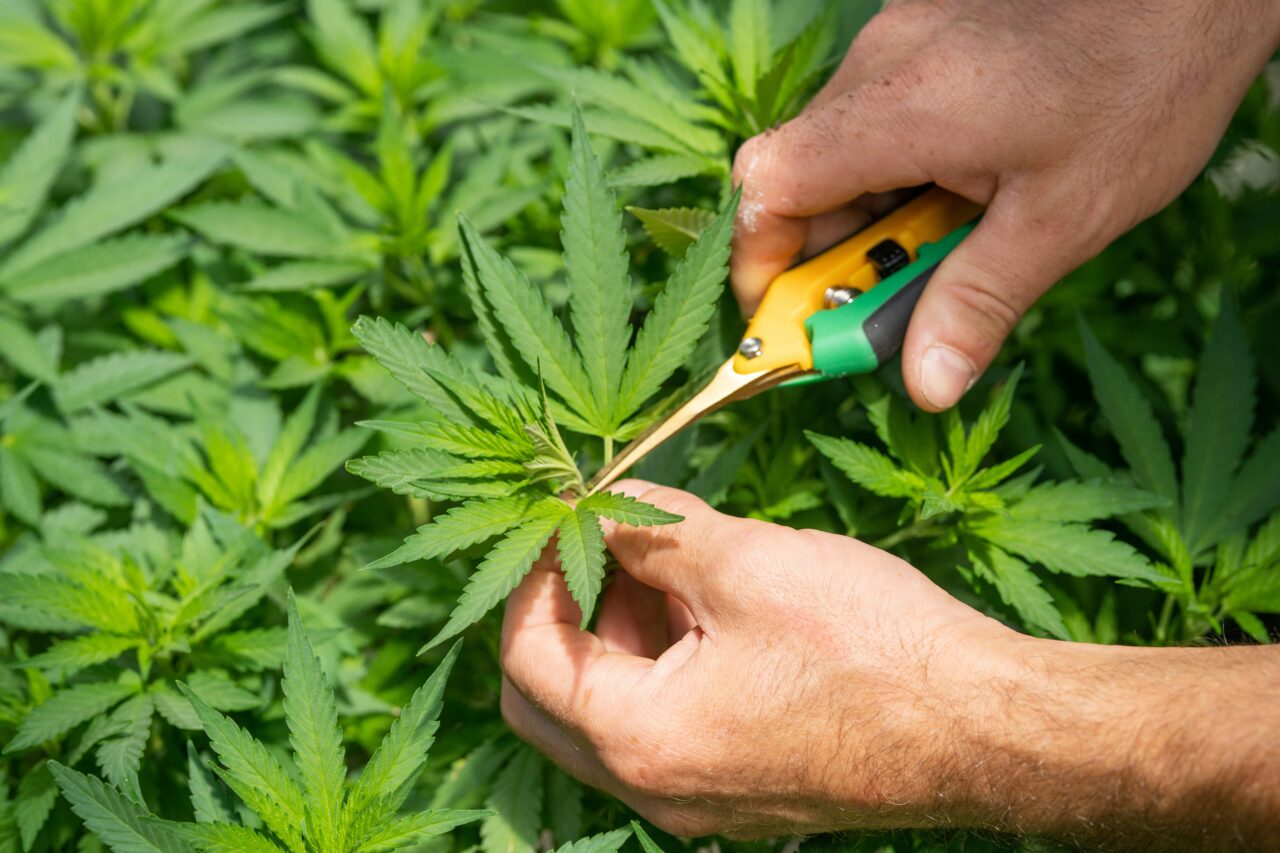 Seeds and Germination
Seeds and Germination
 Grow Setup
Grow Setup
 Seedling Stage
Seedling Stage
 Vegetative Growth
Vegetative Growth
 Pre-flowering
Pre-flowering
 Flowering
Flowering
 Ripening
Ripening
 Harvesting
Harvesting
 Drying
Drying
 Curing
Curing
 Troubleshooting
Troubleshooting
 Training Techniques
Training Techniques
Ripening Cannabis
 15 Minute Read
15 Minute Read

PUBLISHED: August 9, 2024
Ripening cannabis is one of the most critical stages in the growing process. This is the phase where your plant’s hard work culminates, and the buds begin to mature, develop their final potency, and acquire their unique terpene profiles. Timing your harvest precisely at the peak of ripeness is the key to unlocking the full potential of your cannabis in terms of flavor, aroma, and effects.
This guide will take you through the stages of cannabis ripening, how to determine when your buds are ready for harvest, and how to avoid common pitfalls during this crucial time.
Understanding Cannabis Ripening
The ripening phase occurs during the final weeks of the flowering stage, typically between 6-10 weeks for most strains, though some may take longer. During this period, cannabis plants focus all their energy on developing dense, resinous buds filled with cannabinoids (THC, CBD, etc.) and terpenes that determine the plant’s unique smell and taste.

At this point, it’s crucial to monitor your plants closely, as the timing of the harvest will have a significant impact on the potency, flavor, and overall effects of the final product. Harvesting too early or too late can result in diminished quality, so recognizing the signs of ripeness is key to success.
Signs That Cannabis is Ripening
Ripening cannabis plants exhibit several distinct signs, from changes in the trichomes to alterations in the color of pistils and overall bud development. Here’s what to look out for:
Trichome Development
Trichomes are tiny, hair-like structures on the surface of cannabis buds that contain the plant’s cannabinoids and terpenes. The color and appearance of trichomes are one of the best indicators of when your cannabis is ready to harvest.
- Clear Trichomes: When trichomes are clear and glass-like, the plant is still immature. Harvesting at this stage will result in lower potency and less flavor.
- Cloudy/Milky Trichomes: This is the prime stage for harvesting if you’re seeking maximum THC content. Cloudy trichomes indicate that the cannabinoids have fully developed, and the buds are at their most potent.
- Amber Trichomes: Amber-colored trichomes indicate that THC is beginning to degrade into CBN (cannabinol), a cannabinoid with more sedative effects. Harvesting at this stage is ideal if you prefer a more calming, body-focused high.
Pistil Color
Pistils are the hair-like structures that emerge from cannabis flowers. During ripening, their color will change, providing another visual cue for readiness.
- White Pistils: Early in the flowering stage, the pistils will appear white and will stick out straight from the buds.
- Darkening Pistils: As the plant ripens, the pistils will darken to orange, red, or brown and begin to curl inward. When about 70-90% of the pistils have darkened and curled, your cannabis is nearing ripeness.
Bud Density and Aroma
As the buds ripen, they will become denser, heavier, and more resinous. The aroma will also intensify as the plant’s terpenes fully mature.
- Dense Buds: When the buds feel firm to the touch and sticky due to the resin, this indicates they are ripening properly. Airy, underdeveloped buds suggest that the plant still needs more time to mature.
- Aroma: A strong, pungent aroma is a sign that the plant’s terpenes are fully developed. A weak or grassy smell may indicate that the buds aren’t ready yet.
Monitoring Trichomes for Optimal Harvest
The most reliable method for determining cannabis ripeness is by monitoring the trichomes. This requires a jeweler’s loupe or a handheld microscope with at least 30x-60x magnification. Here’s how to use them effectively:
- Check Daily: Start examining trichomes when you’re a week or two away from your estimated harvest date. Check them daily to catch the buds at their peak.
- Inspect Different Buds: Trichomes can mature at different rates, especially if the plant has received uneven light exposure. Inspect buds from the top, middle, and bottom of the plant to get a better idea of overall ripeness.
- Look for Cloudy/Amber Balance: If you prefer a balanced high, aim to harvest when 70-80% of the trichomes are cloudy, with 20-30% turning amber. For a more energizing effect, harvest when most trichomes are still cloudy with minimal amber.
Environmental Factors in the Ripening Stage
Environmental control is critical during the final stages of ripening. The conditions in your grow room or outdoor space can affect the quality and yield of your final product.
Temperature
During the ripening phase, it’s important to slightly lower the temperatures to prevent bud rot and enhance terpene production.
- Optimal Temperatures: During the day, aim for temperatures between 65-75°F (18-24°C), and slightly cooler at night—between 55-65°F (12-18°C). These cooler temperatures help preserve terpenes and avoid stress to the plants.
Humidity
Humidity plays a vital role in preventing mold and bud rot, especially as the buds become denser and more resinous.
- Optimal Humidity: Keep the humidity levels between 40-50% during the ripening phase. Lower humidity prevents excess moisture from accumulating in the buds, which can lead to mold. Use dehumidifiers if necessary, especially during late flowering.
Light
While light is essential for bud growth, too much direct light in the final stages can degrade terpenes and cannabinoids.
- Light Distance: Ensure that your grow lights are far enough from the plants to prevent light burn. As the plant ripens, reduce light intensity slightly to prevent excess heat and stress on the maturing buds.
The Importance of Patience During Ripening
One of the hardest parts of the ripening stage is being patient. It’s tempting to harvest early, especially when the buds look large and resinous. However, harvesting too soon will result in underdeveloped cannabinoids and terpenes, leading to a less potent, less flavorful product.

Waiting until your plants are fully ripe maximizes the potency and enhances the overall effects of the strain. The final week or two of ripening is when the plant packs on the most weight and potency, so don’t rush the process.
Harvest Timing Based on Desired Effects
The timing of your harvest can influence the type of effects your cannabis provides. By understanding how trichomes change over time, you can tailor your harvest to your preferred experience.
Harvesting for Higher THC
- Optimal Trichomes: To maximize THC levels, harvest when 70-90% of the trichomes are cloudy or milky white. At this point, THC is at its peak, and the resulting buds will deliver a strong, cerebral, and euphoric high.
Harvesting for CBD-Rich Buds
- Balanced Trichomes: For CBD-rich strains, the timing of the harvest is also important. Aim for a mix of cloudy and amber trichomes, which indicates that cannabinoids like CBD have fully developed.
- Longer Ripening for More Sedative Effects: If you prefer a more sedative, body-high effect, allow more trichomes to turn amber (around 30-40%). This will result in more CBN, which is known for its calming, relaxing effects.
Common Mistakes During Ripening
Mistakes made during the ripening stage can reduce the quality of your final product. Here are some common pitfalls to avoid:
- Harvesting Too Early: One of the most common mistakes is harvesting too soon. Even if the buds look large and resinous, if the trichomes are still clear, the cannabinoids are not fully developed.
- Overfeeding: Continue feeding nutrients during ripening, but avoid over-fertilizing. Excess nutrients can lead to nutrient lockout or chemical tastes in your buds.
- Poor Environment Control: Failing to adjust temperature and humidity during ripening can result in mold, bud rot, or degraded terpenes.
Ripening Issues – What to Watch Out For
Even during ripening, there are several issues that can arise, potentially jeopardizing your harvest.
Nutrient Deficiencies and Excesses
- Late Flowering Nutrient Deficiencies: Yellowing leaves are common in late flowering as the plant pulls nutrients from its fan leaves to feed the buds. However, severe deficiencies can stunt bud growth.
- Solution: Gradually taper off nutrients during ripening, focusing on phosphorus and potassium, which support bud development.
Mold and Bud Rot
As the buds become denser, they become more susceptible to mold and bud rot, especially in high-humidity environments.
- Solution: Maintain humidity below 50%, ensure good airflow around the plants, and check buds regularly for signs of mold or rot. Remove any affected areas immediately.
Foxtailing
Foxtailing is when new growth appears on top of mature buds, often forming thin, pointed “towers.”
- Causes: Foxtailing can be caused by heat stress or genetics. While it can look odd, it’s not always harmful unless caused by extreme heat.
- Solution: If foxtailing is caused by heat stress, lower the temperature and raise the lights slightly to reduce stress on the buds.
Post-Ripening: Harvest, Drying, and Curing

Once your cannabis has ripened, the next steps are harvesting, drying, and curing, which are just as crucial to preserving the potency and flavor of your buds.
Harvesting
Use clean, sharp scissors or pruning shears to cut the branches and hang them upside down in a dark, well-ventilated space.
Drying
Drying should take place in a cool, dark environment with humidity levels around 45-55%. The drying process typically takes 7-10 days.
Curing
After drying, buds should be placed in airtight jars and cured for 2-4 weeks. This allows the remaining moisture to redistribute evenly, improving flavor and smoothness. Burp the jars daily during the first week to release excess moisture and fresh air into the jar.
Mastering the Art of Cannabis Ripening
Ripening cannabis is the final step in a long journey of cultivation, and it requires careful observation and patience. By monitoring trichomes, pistil color, and environmental conditions, you can ensure that your cannabis reaches its full potential. Whether you’re growing for personal use or as part of a larger operation, mastering the art of ripening will result in higher-quality, more potent, and flavorful buds.
Patience truly pays off in the final stages of cannabis cultivation. With careful timing and attention to detail, your harvest will reward you with a product that reflects the hard work and dedication you’ve put into the grow.

Mike Titan, the founder of Titan Seeds, is a seasoned cannabis cultivator and the mastermind behind the comprehensive grow guide available on the Titan Seeds website.



